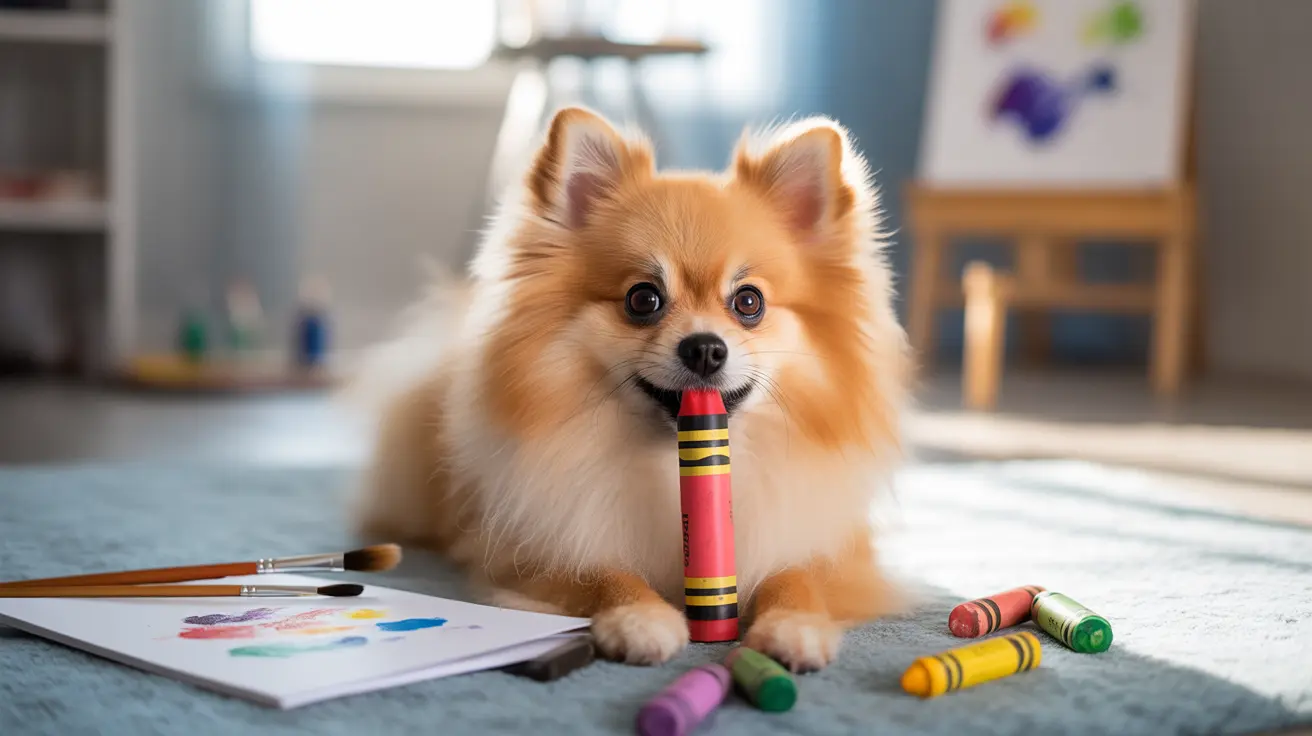If you've discovered your dog munching on crayons, you're not alone. Many pet owners face this concerning situation, wondering about the potential dangers of crayon consumption. While most modern crayons are designed to be non-toxic, there are still important considerations and potential risks you need to understand.
In this comprehensive guide, we'll explore the safety implications of crayon ingestion in dogs, what steps to take if your pet eats crayons, and how to prevent future incidents. Understanding these aspects is crucial for ensuring your pet's wellbeing in case of accidental crayon consumption.
Understanding Crayon Composition and Toxicity
Most commercial crayons are made primarily of paraffin wax and non-toxic pigments, making them generally safe if accidentally ingested in small amounts. Major brands like Crayola specifically manufacture their products to be non-toxic, acknowledging that both children and pets might occasionally consume them.
However, some older or specialty crayons might contain potentially harmful substances, including heavy metals. While rare in modern products, these older materials could pose more significant health risks if consumed.
Health Risks Associated with Crayon Ingestion
Immediate Concerns
When a dog eats crayons, several immediate health concerns may arise:
- Choking hazard, especially with larger pieces
- Gastrointestinal upset, including vomiting and diarrhea
- Potential airway obstruction
- Initial digestive discomfort
Long-term Complications
More serious complications can develop, particularly if multiple crayons are consumed:
- Intestinal blockage
- Chronic digestive issues
- Dehydration from persistent vomiting
- Potential toxicity from non-standard crayon materials
What to Do If Your Dog Eats Crayons
Take these immediate steps if you discover your dog has eaten crayons:
- Remove any remaining crayons from your dog's reach
- Assess how many crayons were consumed
- Contact your veterinarian for professional guidance
- Monitor your pet closely for concerning symptoms
Warning Signs to Watch For
Be alert for these symptoms that may indicate complications:
- Persistent vomiting or diarrhea
- Loss of appetite
- Lethargy or unusual behavior
- Difficulty defecating
- Abdominal pain or bloating
- Excessive drooling
Prevention Strategies
Implement these preventive measures to avoid future incidents:
- Store art supplies in secure, elevated locations
- Use childproof containers for craft materials
- Supervise children during art activities
- Provide appropriate chew toys for your dog
- Address any underlying behavioral issues that lead to pica
Frequently Asked Questions
Are crayons toxic to dogs and can they cause poisoning?
No, most modern crayons are non-toxic and unlikely to cause poisoning. However, large quantities can cause digestive issues, and older crayons may contain harmful substances.
What symptoms should I watch for if my dog eats a crayon?
Monitor for vomiting, diarrhea, loss of appetite, lethargy, constipation, and signs of abdominal discomfort. Seek veterinary care if these symptoms occur.
What should I do immediately if my dog swallows one or more crayons?
Contact your veterinarian for guidance, don't induce vomiting unless instructed, and monitor your pet closely for signs of distress or blockage.
Can eating crayons cause intestinal blockage or choking in dogs?
Yes, crayons can potentially cause both choking and intestinal blockage, especially if large pieces or multiple crayons are consumed. This risk is higher in smaller dogs.
How can I prevent my dog from eating crayons and other art supplies?
Store art supplies securely out of reach, supervise children during art activities, provide appropriate chew toys, and address any underlying behavioral issues that lead to inappropriate chewing.
Remember, while crayon ingestion is usually not an emergency, it's always better to err on the side of caution and consult with your veterinarian, especially if your dog has consumed multiple crayons or is showing any concerning symptoms.






